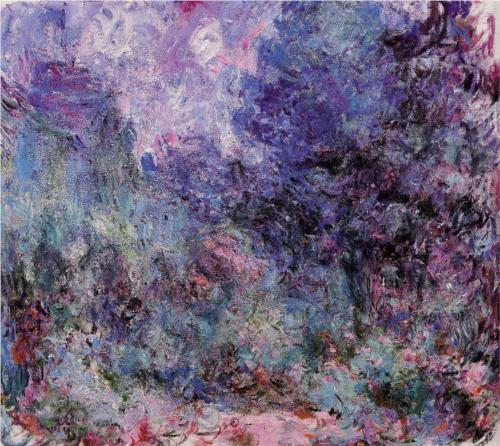It’s the painter’s perennial conundrum: How does one interpret reality, so it, you know, doesn’t look like everybody else’s? While many painters across the canvas of history may resort to the occasional LSD or opium bomb, it turns out all Claude Monet had to do was get eye surgery. Future painters of America, are you listening?I am, of course, referring to the Claude Monet, the legendary French impressionist renowned for using color, texture and abstract brush strokes to create works that are some of the most lauded works in the world today. Indeed, later in his life, he completed a series of paintings cased on the changing colors associated with daylight in his series Haystacks, which are some of his most famous.Turns out Monet may have had a trick up his sleeve during the Haystacks days. He had some gnarly cataracts later on in life, leaving him to complain that his vision was like trying to look through a thick fog. Thanks to the wonderful advancements of early 20th century medicine, he was able to (at the young age of 82) have the entire lens from his left eye removed. The procedure not only gave him his ability to see back, but it gave him something else: the super-human ability to see ultra-violet light — the frequencies of which are normally filtered out by the very lens he had removed — and a resulting condition called Aphakia.Thanks to his new super vision, Monet continued to paint. But this time he had the help of some way trippy ultraviolet blues and purples not usually picked up by human eyes, according to Color Uncovered, an interactive book recently published by the Exploratorium in San Francisco.And if you take a look at the following two painting from his 1922-1924 series, The House Seen From the Rose Garden, you get a glimpse of exactly how Monet’s new super-human vision affected his works. Around the same period, Paul Cezanne was quoted as saying that Monet was “only an eye — yet what an eye.” What Cezanne didn’t realize was how right he actually was. What an eye — a psychedelic, kaleidoscopic cyborg eye, that is — Monet had!
Around the same period, Paul Cezanne was quoted as saying that Monet was “only an eye — yet what an eye.” What Cezanne didn’t realize was how right he actually was. What an eye — a psychedelic, kaleidoscopic cyborg eye, that is — Monet had!
Advertisement
Before lens removal
